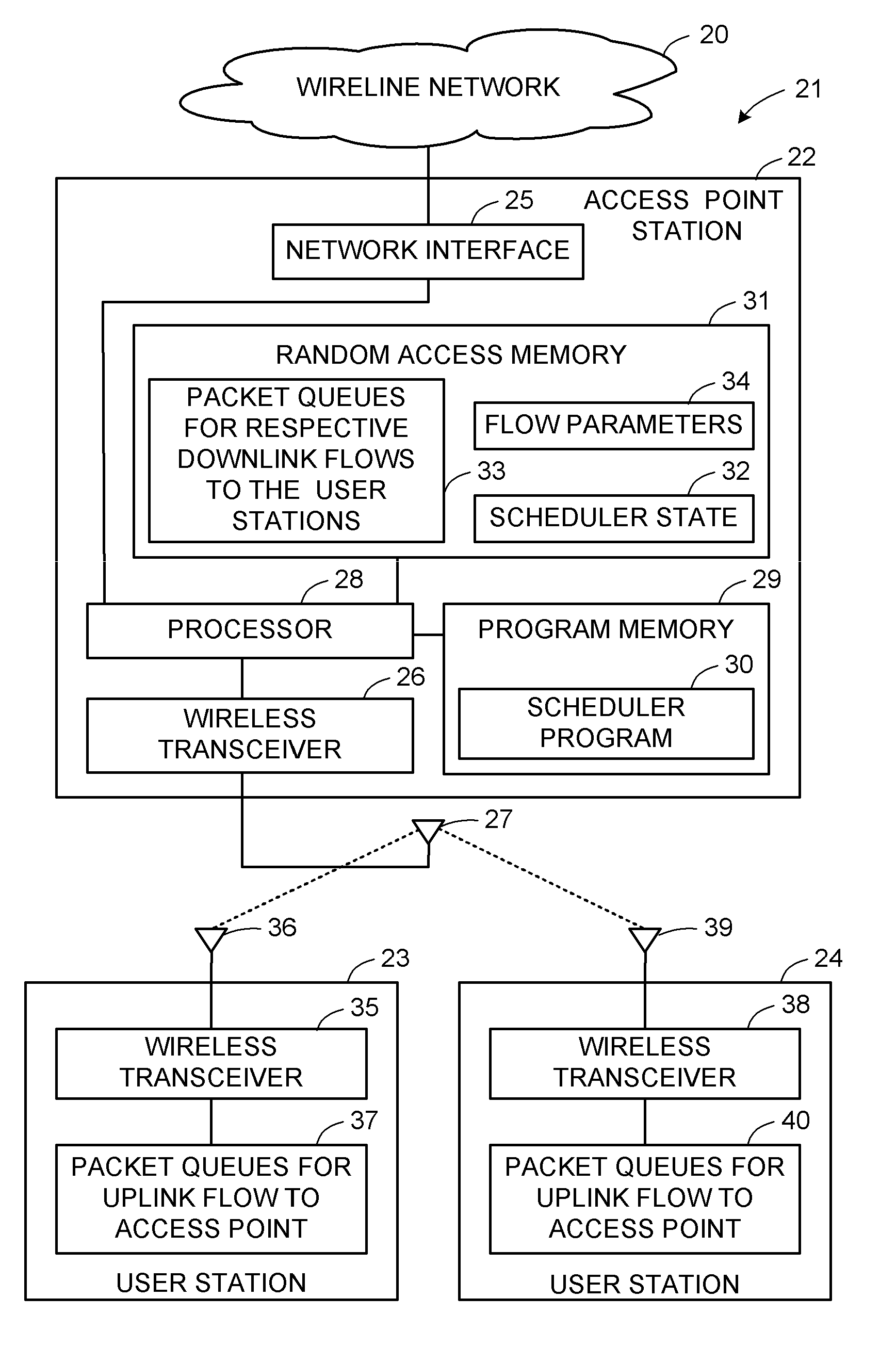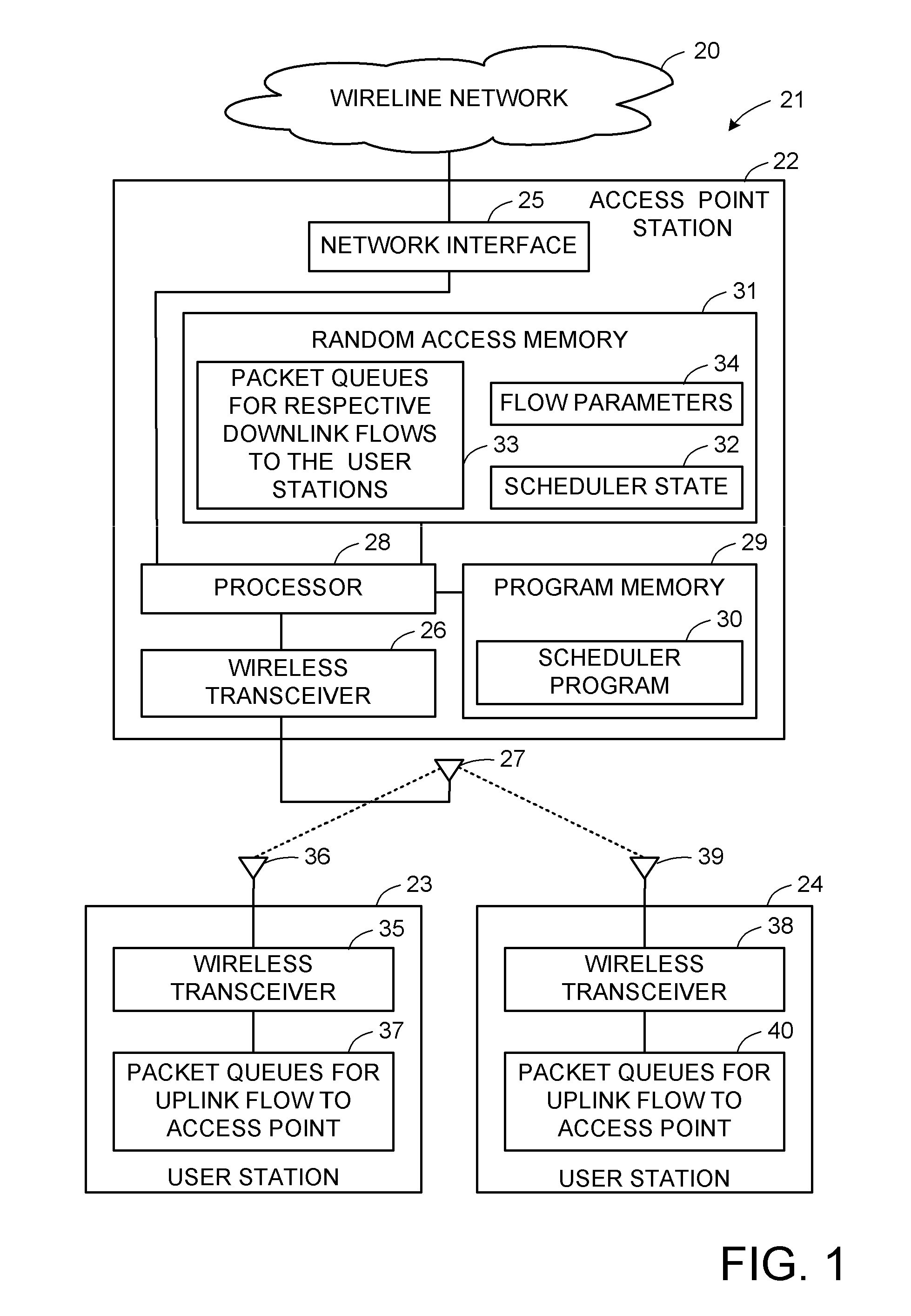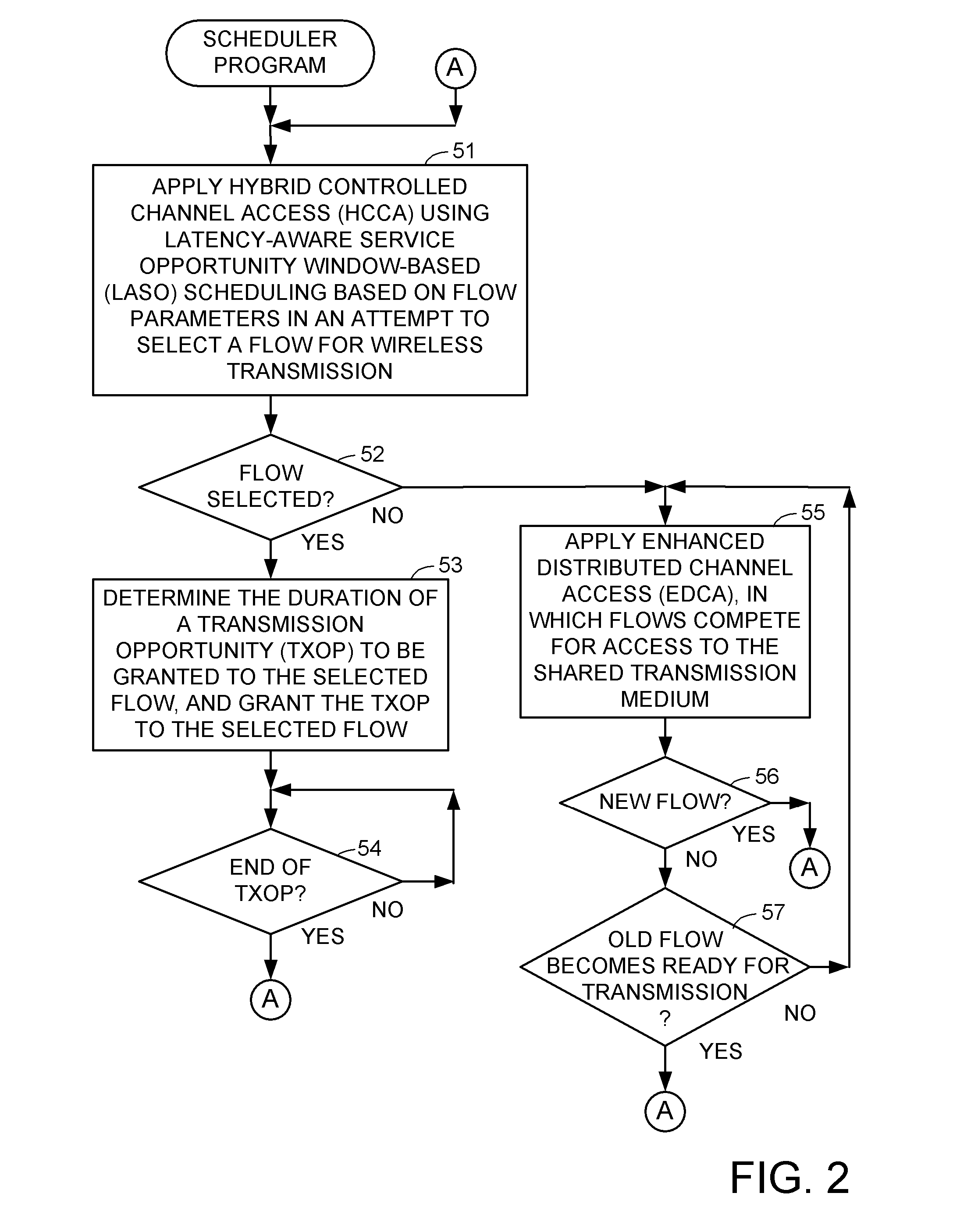Latency-aware service opportunity window-based (LASO) scheduling
a service opportunity and window-based technology, applied in the field of wireless data networks, can solve the problem of consuming a large amount of existing bandwidth, and achieve the effect of maximizing the amount of time provided
- Summary
- Abstract
- Description
- Claims
- Application Information
AI Technical Summary
Benefits of technology
Problems solved by technology
Method used
Image
Examples
Embodiment Construction
[0037] With reference to FIG. 1, there is shown a wireline network 20 connected to a wireless local area network (WLAN) generally designated 21. The WLAN 21 includes an access point station (AP) 22, and a number of user stations 23, 24. For example, the wireline network 20 is the Internet or a corporate data processing network, the access point station 22 is a wireless router, and the user stations 23, 24 are portable computers or portable voice-over-IP telephones.
[0038] The access point station 22 has a network interface 25 linked to the wireline network 21, and a wireless transceiver in communication with the user stations 23, 24. For example, the wireless transceiver 26 has an antenna 27 for radio or microwave frequency communication with the user stations 23, 25. The access point station 22 also has a processor 28, a program memory 29 containing a scheduler program 30, and a random access memory 31. The random access memory 31 contains state information 31 of the scheduler prog...
PUM
 Login to View More
Login to View More Abstract
Description
Claims
Application Information
 Login to View More
Login to View More - R&D
- Intellectual Property
- Life Sciences
- Materials
- Tech Scout
- Unparalleled Data Quality
- Higher Quality Content
- 60% Fewer Hallucinations
Browse by: Latest US Patents, China's latest patents, Technical Efficacy Thesaurus, Application Domain, Technology Topic, Popular Technical Reports.
© 2025 PatSnap. All rights reserved.Legal|Privacy policy|Modern Slavery Act Transparency Statement|Sitemap|About US| Contact US: help@patsnap.com



